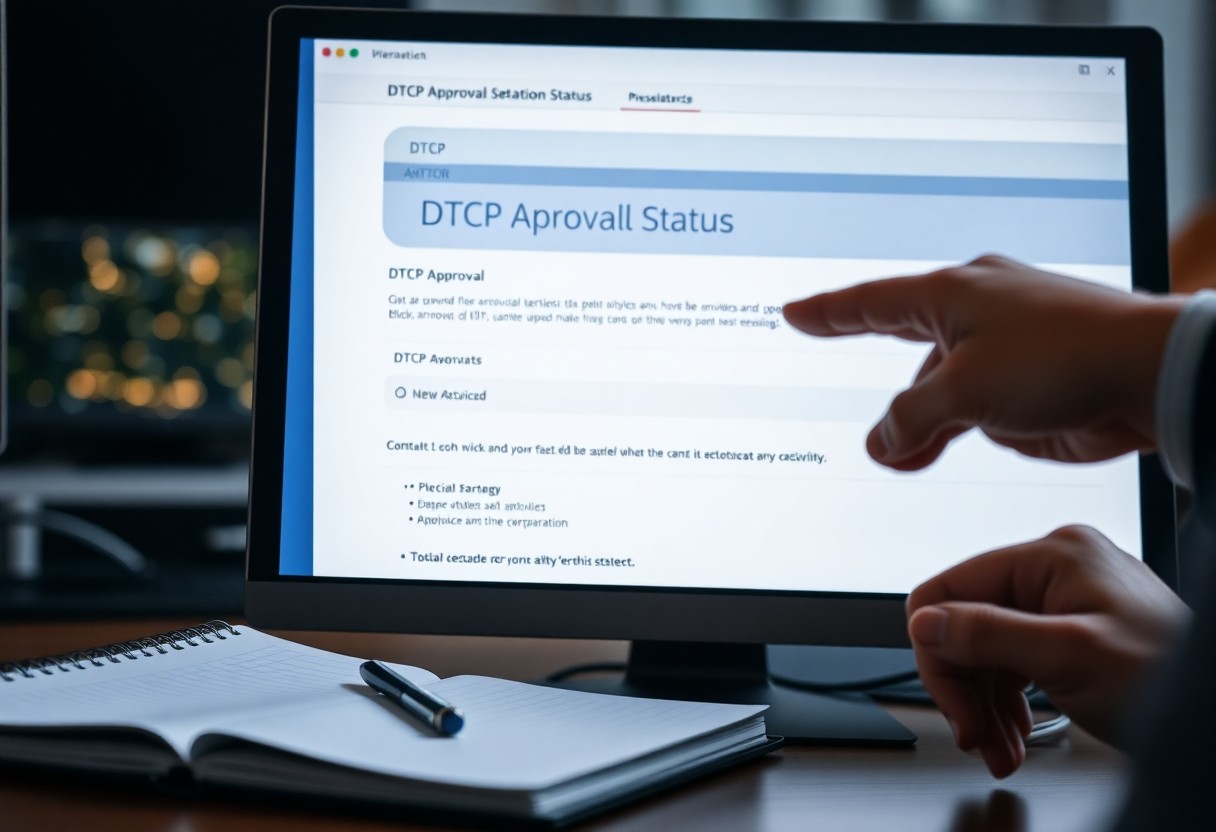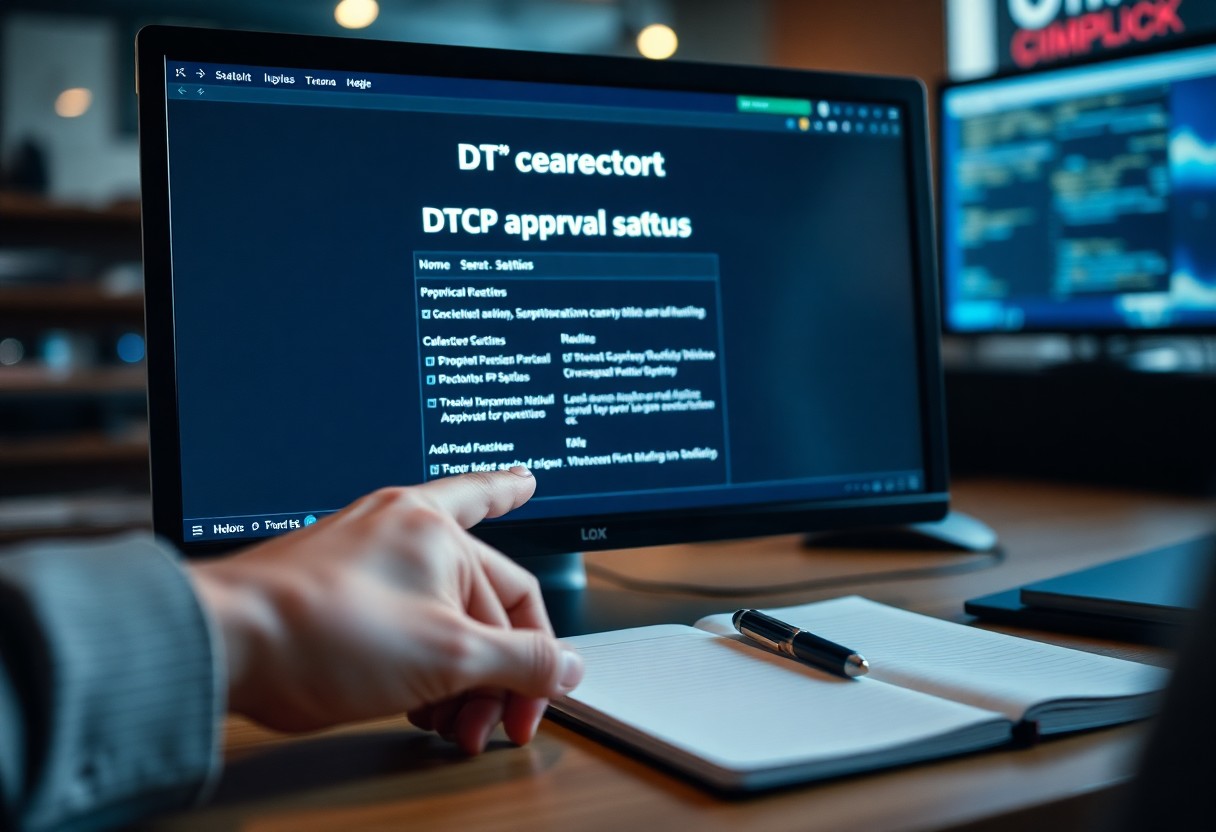Just understanding how to check DTCP approval is important for anyone involved in real estate and property development. By verifying this approval, you ensure that your project adheres to legal regulations and avoids potential disputes. The process involves a few simple steps that will give you confidence in the legitimacy of your property. In this guide, you’ll learn how to efficiently navigate the requirements and access the necessary information to safeguard your investment.
Table of Contents
Key Takeaways:
- Visit the Official Website: Check the DTCP (Directorate of Town and Country Planning) official website for the latest updates on approvals and guidelines.
- Review the Application Status: Access the online services portal to verify the status of your specific application or project for DTCP approval.
- Contact Local Authorities: If needed, reach out to local DTCP offices for direct assistance or clarification regarding the approval process.
Understanding DTCP Approval
Before investing in a property, it’s imperative to grasp the concept of DTCP approval. This certification signifies that a project complies with the guidelines set by the Directorate of Town and Country Planning (DTCP), ensuring that your potential investment meets regulatory standards. An approved project is more likely to provide legal security, enhancing your confidence in the purchase.
What is DTCP Approval?
You may wonder what DTCP approval entails. It refers to the endorsement provided by the Directorate of Town and Country Planning, indicating that a layout plan or development project adheres to specific governmental zoning laws and regulations. This approval is vital for real estate developments, ensuring they align with urban planning standards.
Importance of DTCP Approval
An understanding of DTCP approval is imperative for any property buyer. It validates the legality of a project and can significantly influence your investment decision. Without it, you could be investing in a property that may face legal issues or future alterations.
What you should know is that having DTCP approval protects your investment from potential legal disputes, ensuring that the property is built on land that is fit for development. This endorsement also guarantees adherence to safety and environmental regulations. If a project lacks DTCP approval, you risk facing serious consequences, including fines or mandatory demolitions. Thus, being diligent about DTCP approval can safeguard your investment and provide peace of mind.

How to Check DTCP Approval
Any property buyer must ensure that a prospective investment is DTCP approved. This approval guarantees compliance with urban planning regulations and can prevent future legal issues. To verify DTCP approval, you can use various methods, both online and offline, depending on your preference and convenience.
Step-by-Step Process for Verification
Even if you are new to this process, following these steps will help you confirm DTCP approval easily:
| Step | Description |
| 1 | Visit the official DTCP website to access records. |
| 2 | Enter your property details, such as the site name or registration number. |
| 3 | Review the status to see if DTCP approval is granted. |
| 4 | For offline checks, visit the local DTCP office with your documents. |
Online vs. Offline Methods
Check the methods you can use for verifying DTCP approval. Online methods are typically faster and can be done from the comfort of your home, while offline methods might require in-person visits.
It is imperative to understand that online methods provide you with immediate access to official records and allow you to avoid long queues. However, if you prefer face-to-face communication or have specific inquiries, offline verification at the local DTCP office can be beneficial. Always ensure to have your property documents ready, as this can expedite the process regardless of the method you choose.
Tips for Ensuring a Smooth Approval Process
To ensure a smooth DTCP approval process, consider the following tips:
- Stay informed about the latest regulations.
- Communicate with relevant departments frequently.
- Double-check your documents for completeness.
- Consult with professionals if needed.
Assume that each step you take will help expedite the process and improve your chances of a successful outcome.
Preparing Required Documentation
If you want to prepare the required documentation for DTCP approval, gather all necessary permits, blueprints, and supporting paperwork in advance. Make sure your documentation is both comprehensive and accurate to avoid unnecessary delays.
Common Mistakes to Avoid
Required documents can often be incomplete or incorrectly filled out, leading to delays in your DTCP approval. Ensure every piece of information is accurate and matches other records.
With awareness of the common pitfalls, you can significantly improve your chances of a seamless approval process. Pay special attention to details like misspellings in names, incomplete addresses, or any inconsistencies in your application. These seemingly minor errors can lead to significant setbacks. Additionally, failing to follow submission deadlines or omitting required documents can jeopardize your chances of obtaining approval. By being diligent, you create a more efficient experience for both yourself and the approving authorities.

Key Factors Influencing DTCP Approval
Now, several key factors influence your chances of obtaining DTCP approval. These include:
- Location of the property
- Compliance with zoning regulations
- Type of property involved
- Proposed development plans
Knowing these factors can help streamline your approval process.
Location and Zoning Regulations
Approval of your application heavily relies on the location and adherence to zoning regulations. Depending on the designated zoning category, requirements may vary, impacting everything from building height to land usage, which must be aligned with local development policies.
Property Type and Development Plans
Plans for your site are evaluated based on property type and how they align with existing regulations. The authorities will assess whether your proposed development meets both community needs and municipal laws.
Type of property plays a significant role in the DTCP approval process. Whether it’s a residential, commercial, or industrial project, each type has specific guidelines you must adhere to. If your plans involve infrastructure development, you may face additional scrutiny regarding environmental impact and sustainability factors. Understanding these distinctions can aid you in tailoring your submission for a higher likelihood of success.
What to Do if Your DTCP Application is Rejected
All applications for DTCP approval can face rejection for various reasons. If your application is turned down, it is imperative to carefully evaluate the feedback provided and take appropriate actions to address the concerns raised by the authorities.
Common Reasons for Rejection
You may encounter several common reasons for DTCP application rejection, such as incomplete documentation, discrepancies in land ownership records, non-adherence to local zoning laws, or failure to meet technical specifications. Understanding these issues is vital to prevent recurrence in future applications.
Steps to Appeal or Reapply
Even if your application has been rejected, you have the option to appeal the decision or reapply. Begin by reviewing the rejection notice thoroughly to understand the specific reasons for denial.
A well-structured approach can significantly improve your chances of approval upon reapplication. Gather all the required documents and rectify any discrepancies noted in the rejection. You can choose to file an appeal against the decision by addressing the concerns explicitly in your application or you may opt to reapply with a stronger submission. If appealing, ensure to submit all supporting documents before the stipulated deadlines and maintain open communication with the DTCP officials for any further clarifications. Following these steps can help you build a stronger case for your future applications.
Resources for Further Assistance
Not all resources are equal when it comes to checking DTCP approval. It’s vital to seek reliable information and guidance to ensure you get accurate results. Utilize official sources and professional services to navigate the complexities of DTCP regulations effectively.
Government Websites and Contact Information
Clearly, government websites provide reliable and updated information regarding DTCP approvals. You can access relevant documents, guidelines, and contact details for officials who can assist you. Visit the appropriate state or central government portal to find the necessary links and phone numbers for inquiries.
Professional Consultants and Services
There’s a range of professional consultants and services that specialize in obtaining DTCP approvals. These experts can help you navigate complex regulations and processes efficiently, saving you time and effort.
Contact professional consultants to ensure that you fully understand the requirements for DTCP approvals. These specialists often have in-depth knowledge of local regulations, helping you avoid common pitfalls that could cause delays. By leveraging their expertise, you may not only secure the necessary approvals faster but also gain insights into future compliance. Investing in such services can mitigate potential legal issues and enhance the success of your project.
Final Words
From above, you now have the necessary steps to check for DTCP approval effectively. To ensure your property meets all regulatory guidelines, it’s crucial to perform this check. You can easily verify DTCP approval by following the comprehensive process provided in the DTCP Telangana Approval Check Online Step-by-Step Guide. This will give you peace of mind regarding your real estate ventures.
FAQ
Q: How can I find out if my product has DTCP approval?
A: To check if your product has DTCP (Digital Transmission Content Protection) approval, you can start by visiting the official DTCP website. They often maintain a database or list of approved devices. Additionally, you may find information on product packaging or the manufacturer’s website, where they usually indicate compliance with DTCP standards. Contacting the manufacturer directly can also provide definitive confirmation.
Q: What steps should I take to verify DTCP compliance for a specific device?
A: To verify DTCP compliance for a specific device, begin by gathering the model number and manufacturer details. Then, check the official DTCP association website for a compliance list or database feature. If this information is not available, reach out to customer support of the manufacturer and inquire about the device’s DTCP status. They should be able to provide the most accurate and up-to-date information regarding DTCP compliance.
Q: Are there any resources available online for checking DTCP approval status?
A: Yes, several online resources can assist you in checking DTCP approval status. The official DTCP website publishes lists of approved devices, which can be accessed freely. In addition to that, technology forums and consumer review platforms may have discussions related to DTCP certification relevant to specific products. Lastly, searching for your device’s model in search engines can yield links to relevant information about its DTCP approval status.